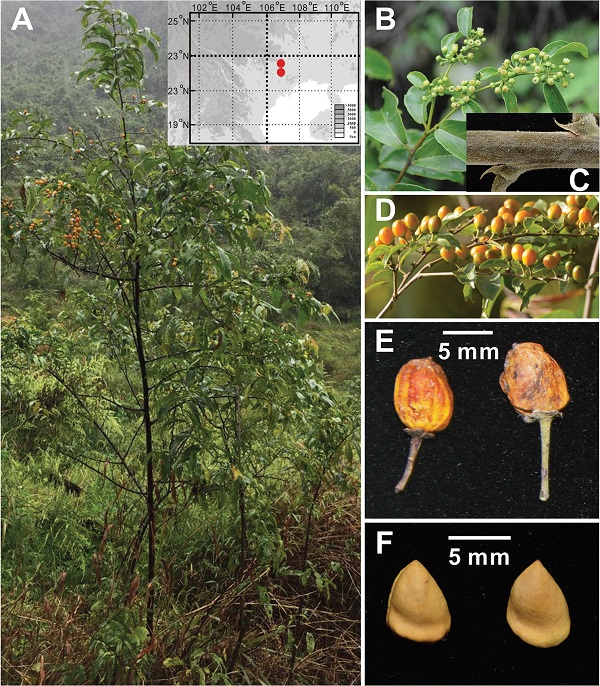Rhamnella in the family of Rhamnaceae is a small genus. To date, 10 species have been accepted into this genus. In field investigations, researchers from Xishuangbanna Tropical Botanical garden (XTBG) found two Rhamnella populations from southwest Guangxi that belonged to the evergreen group but could not be ascribed to any of the evergreen Rhamnella species.
After having morphological and molecular studies, they confirmed that the species is new to science and named it as Rhamnella intermedia owing to its intermediate morphology compared to the other three closely related species.
The new species was published in PhytoKeys.
The researchers carried out field investigations on the distribution and habitat, and characterized its morphology based on these two populations from southeast Guangxi. They then conducted the principal component analysis (PCA) based on phenotypic traits to show the morphological differences. Finally, they sequenced the nuclear internal transcribed spacer (ITS) fragment to clarify its genetic distinctness.
Rhamnella intermedi is morphologically similar to R. rubrinervis based on leaf characters, but they can be easily distinguished between each other by fruit and seed characters. However, it also can be significantly distinguished from R. rubrinervis by the densely pilose young branches, if the specimen has no fruit and seeds.
To date, only two R. intermedia populations have been collected from southwest Guangxi. For its population census, more than 20 mature trees (3–6 m in height) and a large number of seedlings grow on the karst limestone hill. Further field investigations on its entire distribution are recommended in the future.
Contact
SUN Yongshuai Ph.D Principal Investigator
CAS Key Laboratory of Tropical Forest Ecology, Xishuangbanna Tropical Botanical Garden, Chinese Academy of Sciences, Mengla, Yunnan 666303, China
E-mail: sunyongshuai@xtbg.ac.cn

Rhamnella intermedia . A The whole plant, habitat and two geographical
locations B flowering branches C a young branch with the persistent stipule D branches with
leaves and fruit E dried fruit F mature seeds. (Images by LU Zhiqiang)

